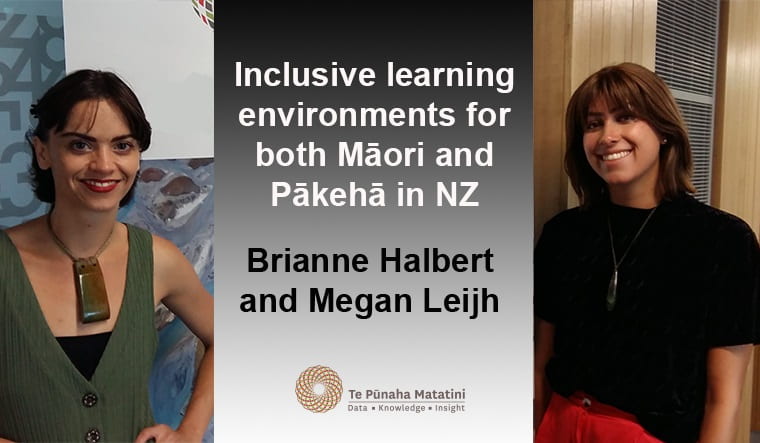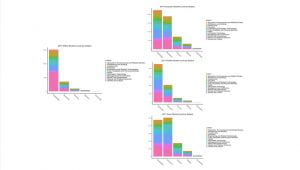Improving education for all is as uncontentious as political clauses get here in Aotearoa, championing this issue is on the front burner of nearly every government body, institution, and organisation across the country. Compare this to the endless debate, controversy, resistance, and even hostility which meets attempts to address protocol and resolve for our Māori students.
He waka eke noa and ‘Auckland 2050’
This year’s research project at Te Pūnaha Matatini, ‘He waka eke noa’, is part of an ongoing research partnership with Ngāti Whātua Ōrākei that aims to highlight some features of our education system in Aotearoa—chiefly those affecting Māori—as part of Auckland Council’s greater 30-year vision, ‘Auckland 2050’.
He waka eke noa follows in the wake of last year’s research, ‘Analysis of Well-Being’, which endeavoured to interpret open responses of 684 registered hapū members, taken from surveys encompassing various forms of codified knowledge and kōrero in the hopes of directing the development of a hapū well-being framework. Well-being was measured with regards to life satisfaction, education, housing, proficiency and abilities in te reo and, more generally, te Ao Māori. Last year’s well-being research proposal was awarded Marsden funding through the Ministry of Business, Innovation and Employment’s (MBIE) Te Pūnaha Hihiko: Vision Mātauranga Capability Fund, which invests in ‘the development of skilled people and organisations undertaking, research that supports the themes and outcomes of our Vision Mātauranga policy.’
A major component of our research cannot be revealed here for privacy reasons, but for the purpose of sharing some of the motivations and ways we engaged with our research, we can look at the educational climate of Aotearoa as a whole, indigenous ways of knowing, and the shared stake we have as a community to improve mainstream education for our Māori students.
Using data collected by the Ministry of Education, we constructed the below graphs to show 2017 post-secondary completions by subject. We found that Māori students were either largely underrepresented or overrepresented across major subjects. Further, we saw more spread in subjects taken amongst other ethnicities while Māori students predominantly stayed in familiar domains—especially at earlier levels of study.
However, there seems to be more spread in subjects once Māori students reach a Bachelors level. This may suggest continuation in studies can affect the way in which Māori students engage with subjects- branching out into different fields after acquiring confidence in mainstream education institutions.
Research in keeping with te Ao Māori perspectives
Owing to our shared identities of being both Māori Pākehā, as well as students- we attribute a lot of strength throughout this project in our ability to appreciate the unique issues and challenges faced by students with shared membership. We also acknowledge the capabilities for dynamism and resilience. From the outset, a major goal was to utilise our respective disciplines for research while keeping the essence of te Ao Māori perspectives alive throughout. Our team engaged in quantitative analysis as well as discourse analysis pulling from a multitude of various texts that laminated on indigenous taxonomy and concepts surrounding Mātauranga Māori.
Mātauranga Māori embodies a complex network of codified systems of knowledge transfer and storage to which universal constructs are framed in both past and present, existing and non-existing. Cognisance and assessment of information and protocol envelops moteatea (chants, poems), whaikorero (oratory, speechmaking), maramataka (calendar), waiata (songs), pepeha (quotations), whakataukī/whakatauki (proverbs), whakapapa (genealogies) and pūrākau (stories)—each with its own categories, style, complex patterns and characteristics’ (Lee J, 2008).
This culturally-embedded system founded on kanohi kitea (face-to-face) interactions between individuals, whānau, hapū, and iwi is an all-encompassing body of knowledge based on evidence, culture, values and worldview. Despite being a rich form of gathering and sharing information, these traditional ways of knowing have often been considered incompatible with local pools of thought and sanctioned as illegitimate in the wider scientific and academic communities.
In rumination of Aotearoa’s current educational climate, it’s hard to imagine that the above mentioned would not play a significant role in how Māori students interact with mainstream constructs of knowledge as well as the capacities of education providers, peers, and the public to appropriately assess and acknowledge learning systems so undivulged in the domains to which they usually operate. We might also consider how the role of whānau can be affected in the enormous task of accessing and providing tools relevant to outside industries of learning and their abilities to advocate on behalf of their tamariki far from the sources of support provided within their everyday communities. As Māori student education figures indicate improvements in academic participation, the alarmingly high SSEE rates (stand-downs, suspensions, exclusions and expulsions)— at nearly all levels of study— only corroborates the narrative that the current education system is failing. The system in place is robbing its students of having an equal chance to prosper in falling short of its most essential obligations– to encourage and inspire student potential. The damages placed on already strained communities to which these students are part of seems to fuel a never-ending cycle that sets up generation after generation with even less opportunities to thrive.
Unfortunately, the displacement of Māori is not consigned to the past. Historical attempts to keep te Ao Māori outside of the local mainstream includes legislation such as the Tohunga Suppression Act, the Education Ordinance Act and the Native Schools Act, and a nationwide ban on te Reo Māori, including ‘A wide range of punishments used against children who speak te Reo at school (including corporal punishment)’.
Amid cultural asphyxiation, Māori risk losing their voice, abilities to navigate on their own terms, and essentially – their mana. Even in moments of advocacy we are limited in our capacities. We look at issues surrounding Māori and the needs for address but from a Māori standpoint, there is a need for redress. An overwhelming loss of trust in the mainstream educational institutions prevails when we miss these opportunities of knowing.
Conclusion
In conclusion, institutions cannot remain mutually exclusive in inclusive learning environments. There is a demand for institutes for Māori and Pākehā across Aotearoa, to foster a respectful, understanding and empathetic community. Culture is a learned system. Access to Māori systems of support in schools will elevate New Zealand children’s comprehension of how culture, language, and heritage empower their own identities. The immersion of these two systems of education will lead to a broader sentiment of cultural heritage will encourage New Zealand’s future communities to practise more tolerance and acceptance of cultural diversity.
He waka eke noa in a literal sense translates to the ‘canoe which we are all in without exception’. For the purposes of this project, we might attribute this whakataukī to a collective consciousness and gentle reminder that, when we are in a waka, there is unity in a shared purpose. Here, we look to education.
Authors
Brianne (Bri) Halbert and Megan Liejh are students at the University of Auckland. Bri is pursuing a double major in Computer and Data Science, and Megan is completing a conjoint Law (Hons) and Arts Degree in Political Philosophy Law and Politics. While these disciplines may appear vastly different, they were able to find a lot of overlap and even harmony in their exploration of inclusive education for Māori.
Reference
Lee J. 2008, Ako: Pūrākau of Māori teachers’ work in secondary schools. [Unpublished PhD thesis]. Auckland, New Zealand: University of Auckland.


